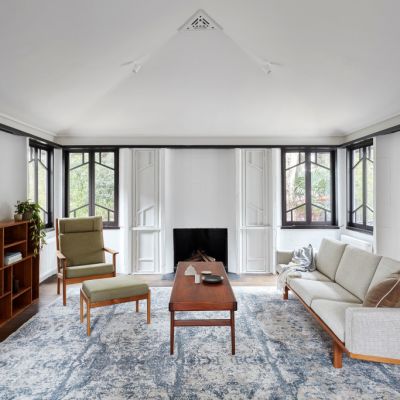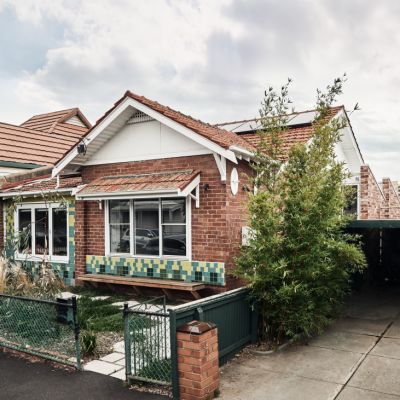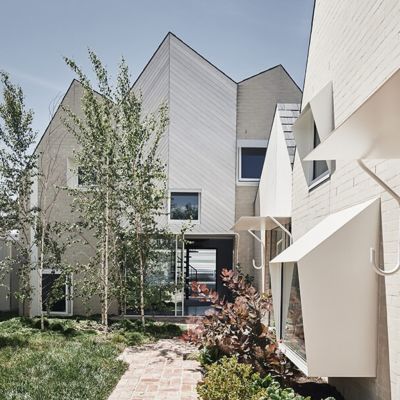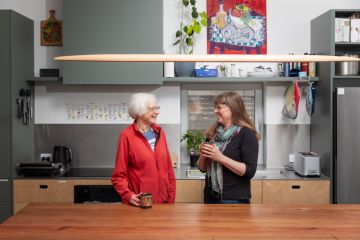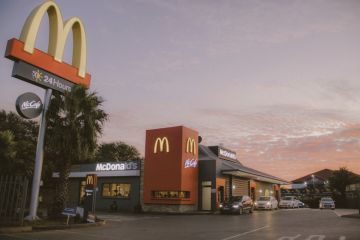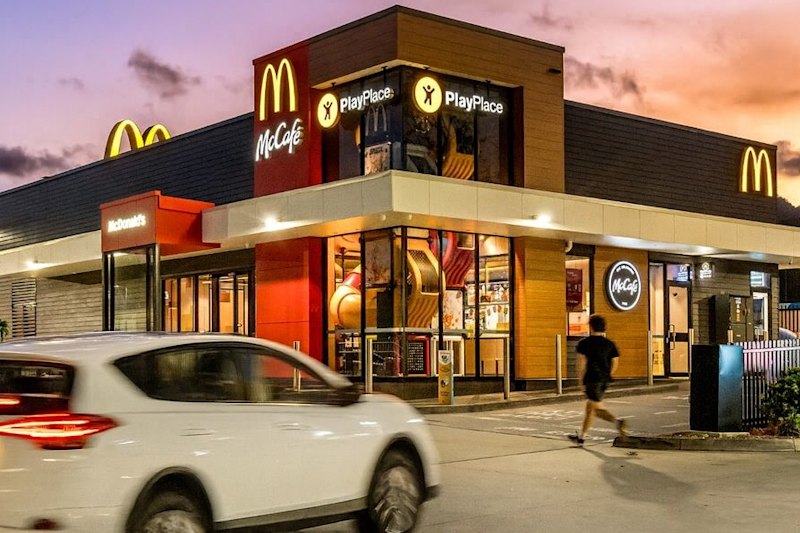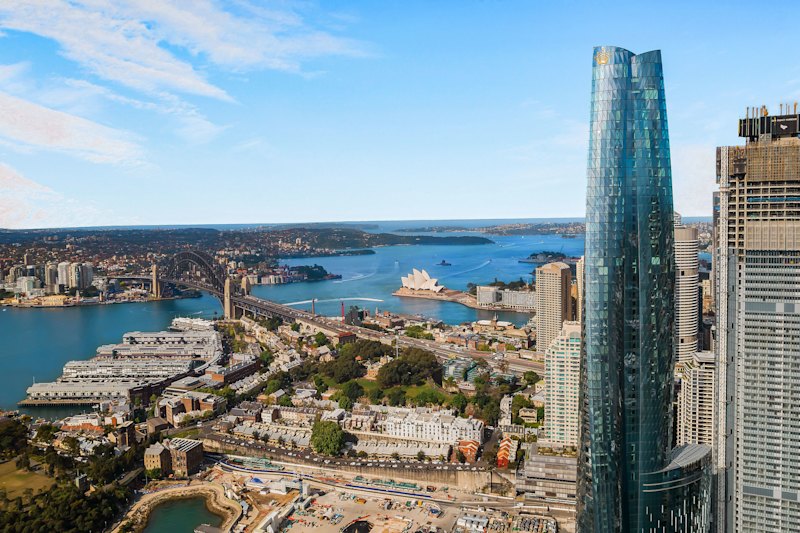Curiouser and curiouser: Alice's new house comes complete with its own looking glass
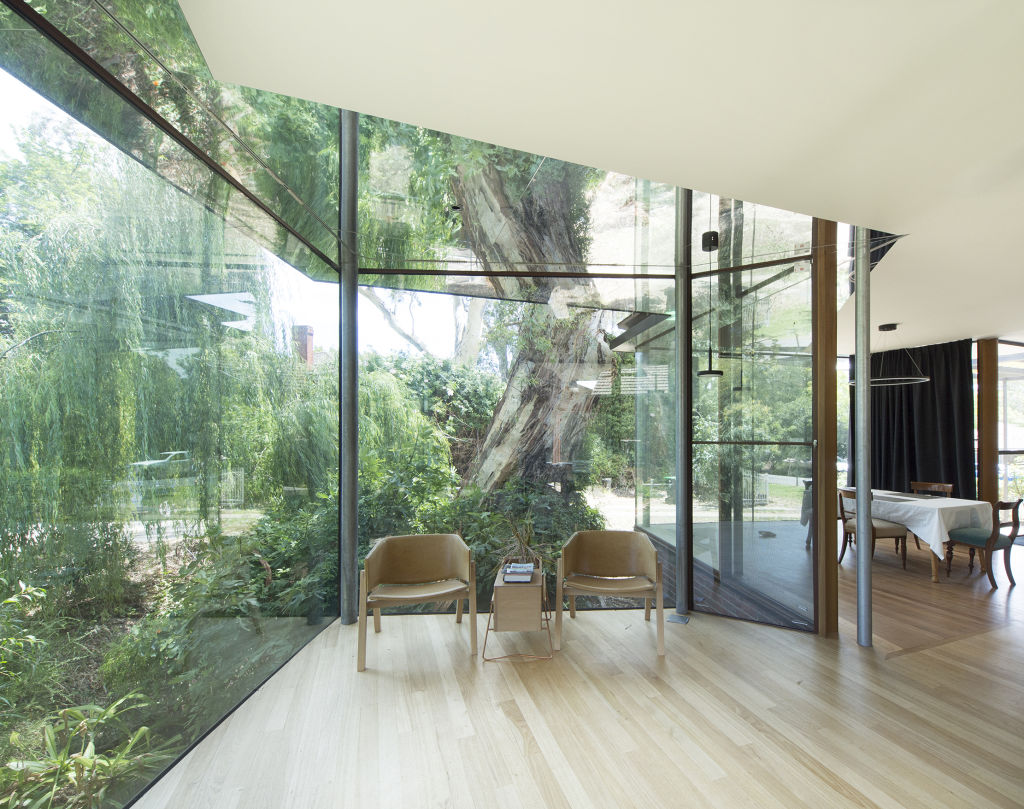
A residential project that uses ceiling mirrors to play with the warping of spatial perceptions, titled “Through the Looking Glass”, has brought Adelaide Hills architect John Adam an additions and alterations prize in this year’s South Australian Architecture Awards.
The glassy wings, which he raised on the back of a square and rather formal ’60s brick house for a client who grew up there and took it over when her mother died, were to cater for the second- and third-generation family.
By curiouser and curiouser coincidence, the young teenage daughter who scored her own gabled “tower” bedroom in the expansion goes by the name of Alice.

The owner wanted a more relaxed approach to making the most of the natural attributes of the 3035-square-metre suburban foothills site, including several century-old River red gums and a creek that winds across the rear of the property after winter rain.
The client couldn’t have chosen a more apt designer for the job. Before he became an architect, John Adam had trained as a permaculture landscaper and, from day one of this project, was generating a redesign of the garden setting that made a “nature pond” the centrepiece between the two new pavilion-like wings.
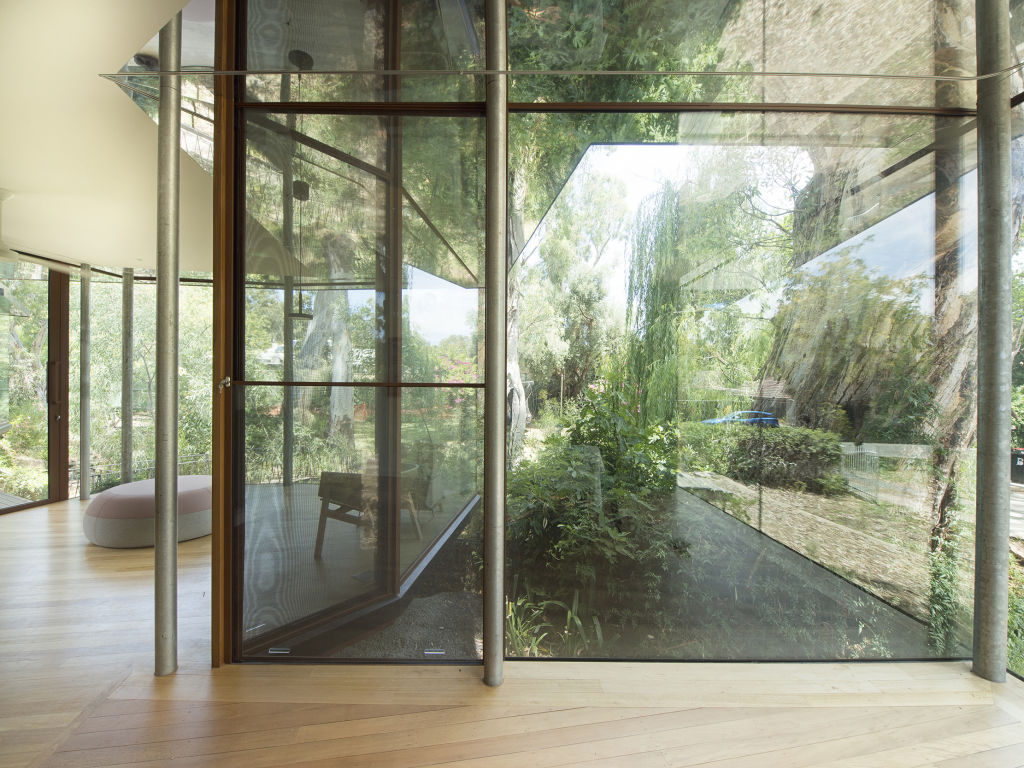
Aerated and planted with native aquatic plants to keep it biologically healthy, the rock-surrounded water feature is occupied by frogs and visited by a koala. “It also creates a micro-climate,” Adam says. “When breezes blow across, cool air is pulled into the house.”
When the mum is in the bath in the revamped bathroom in the old section between the wings – which can open to the pond via French doors – “it’s pretty heavenistic” Adam says, cheerfully inventing a new word.
There is floor-to-ceiling glazing – “90 per cent of the new build is glass” – and the overhead mirrors even extend out under the eaves. The question of this intriguing architectural exercise is, what is house and what is garden?
What, indeed, is up, and what is down?
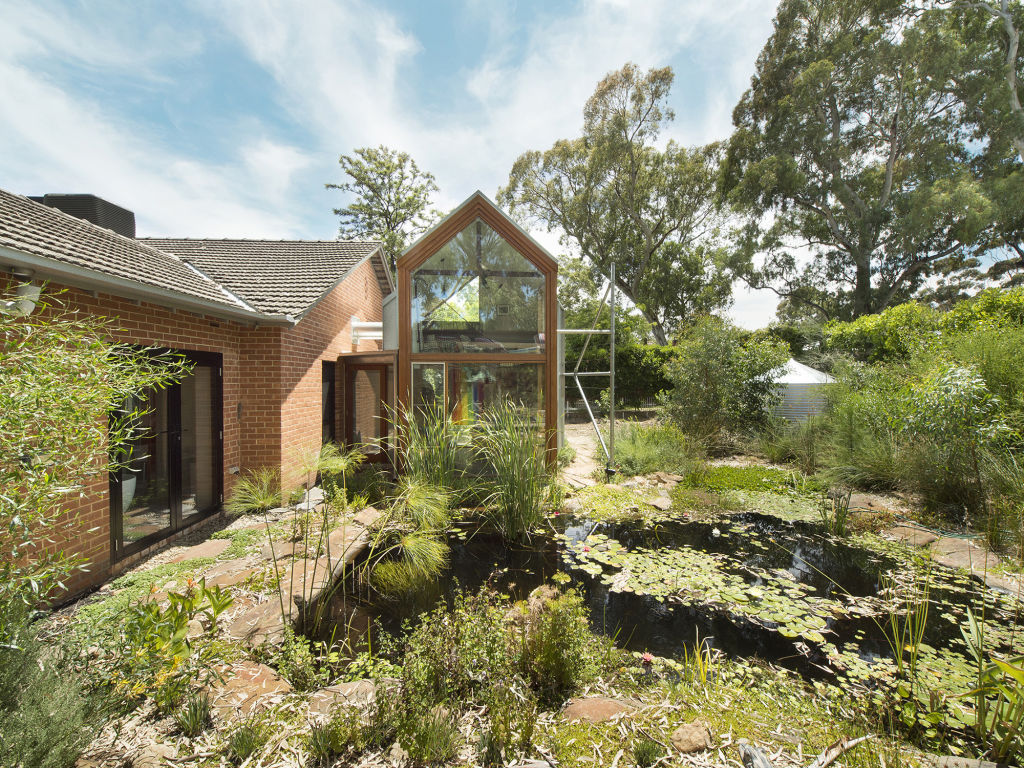
Adam says there is a traditional house at the front of the block sitting parallel to the street, and “as you journey towards the creek, the architecture fragments and its shapes respond to the creek and hug the trees”.
“We also introduced angles and mirrored ceilings to break the envelope between inside and out,” he says.
“With the mirror cutting through the window frames, it all becomes a little bit discombobulating. You can sit inside in a chair, look up and see the creek.”
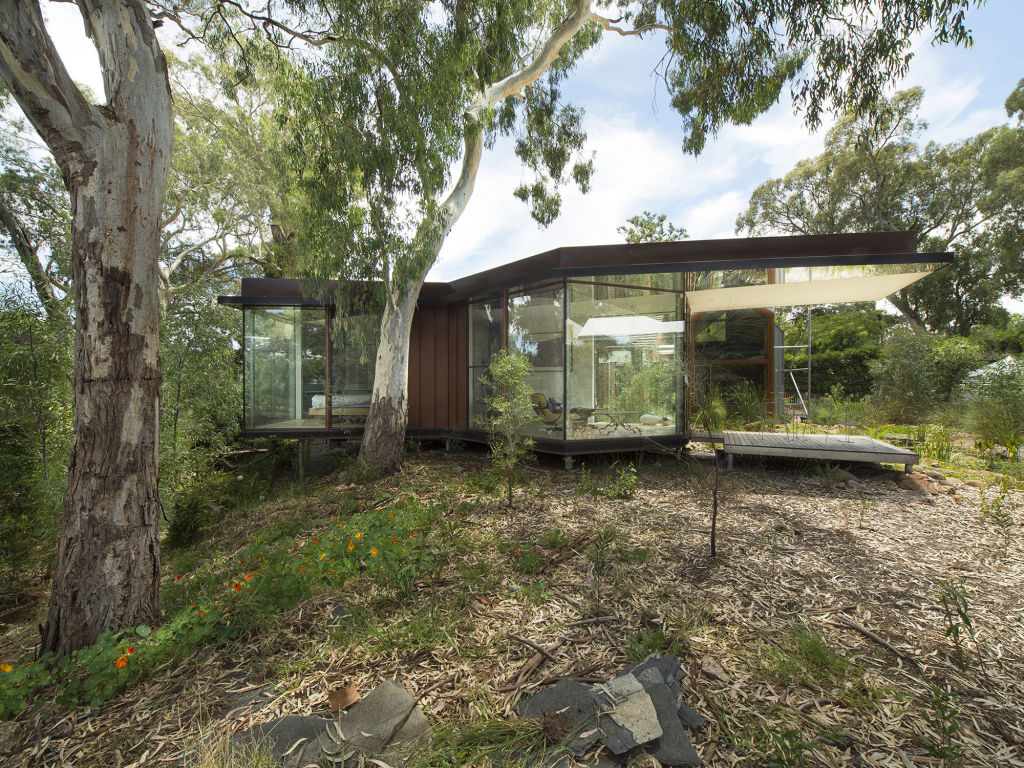
Addressing a request for gallery-like new living spaces and glass-sided bedrooms, and covering the need to raise the additions up above the seasonal flood plain on a sequence of “galvanised round columns that penetrate the floor”, inventiveness is everywhere.
Poles irregularly spaced inside the window glass replaced a conventional framework grid, “and become both structural and aesthetic”.
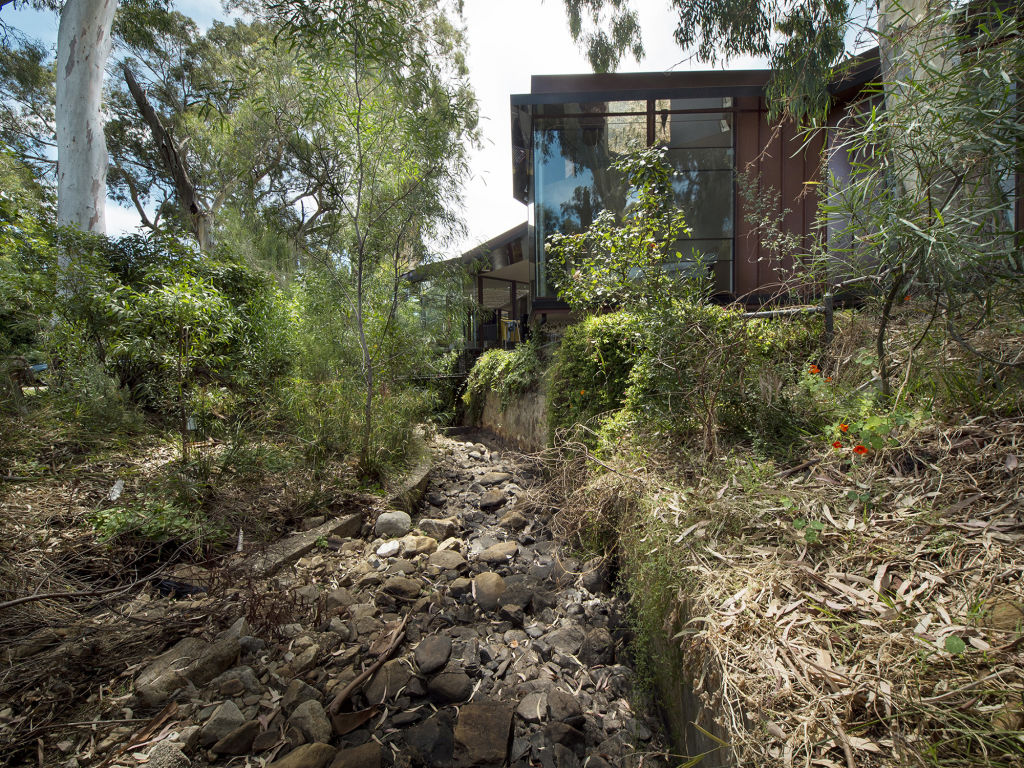
Given free rein by his client, “who said ‘Yes, yes’ to everything”, and the ability of Mark Di Mauro, “a great builder who was able to understand the unusual structural techniques”, John Adam says it was because he “was able to fully explore his craft” that he was able to do something like this.
There are all sorts of subtle detailing in form and materiality. “Vertical and horizontal lines that float the roof and pull the house to where we wanted it to go, took this project to the next level.”
It’s different and enchanting. “Something like this could have become try-hard. But this is very relaxed. It’s free-form, lightweight, transparent and very emotional in the way that it connects to the landscape.”
We recommend
States
Capital Cities
Capital Cities - Rentals
Popular Areas
Allhomes
More
- © 2025, CoStar Group Inc.
